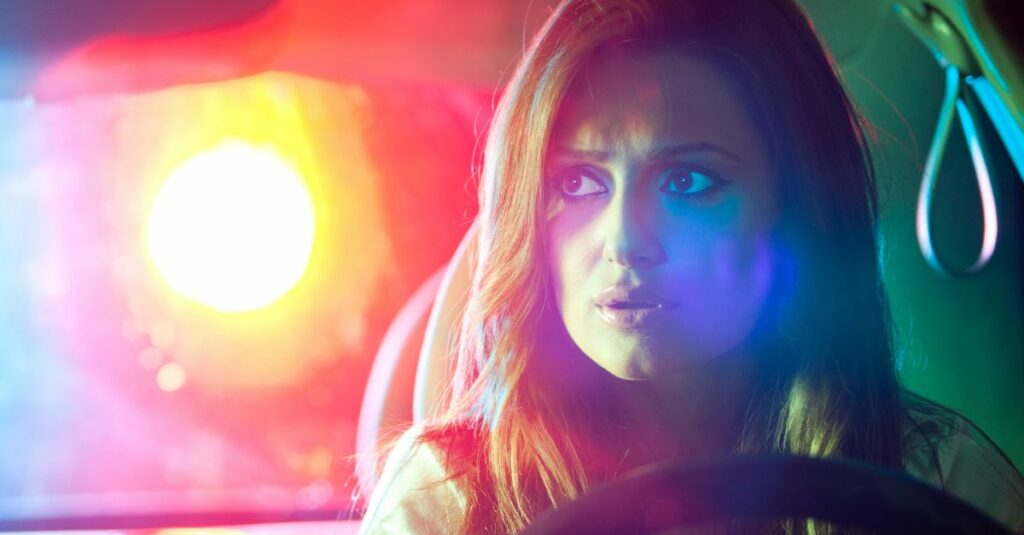Recreational marijuana may be new, but lawmakers are looking to the past for guidance. Plenty of cannabis activists have pointed out the many similarities between alcohol and pot laws from Prohibition through legalization. Interestingly, these comparisons may extend into the realm of DUI legislation. Many states that allow recreational weed are using drunk driving laws as a model for their cannabis policies.
While there isn’t a 1:1 comparison between how alcohol and weed impacts driving, there are some interesting parallels worth considering. Also, since alcohol DUIs predate legal pot, they play a significant role in shaping today’s cannabis statutes. Even though cannabis and alcohol are unique substances, the law has yet to catch up with the latest science. Tokers need to know the DUI policies in their state to avoid legal issues.
Background On Booze Bureaucracy — A Brief History On DUI Laws
Most legal scholars believe DUI laws first appeared in America in the early 20th century. Interestingly, early DUI laws in New York didn’t specify how much alcohol was enough to be considered “drunk driving.” Due to a lack of hi-tech testing equipment, police officers could arrest drivers suspected of DUI.
Progress on DUI standardization only picked up steam as scientists developed reliable ways to measure BAC. The most significant innovation in this field was Robert Frank Borkenstein’s Breathanalyzer. However, even with this tool, each state had its own definition of what constituted “drunk driving.” Believe it or not, some states had a BAC threshold as high as 0.15 percent!
According to most lawyers, America seriously clamped down on drunk driving after Candace Lightner created Mothers Against Drunk Driving (MADD) in 1980. This non-profit group influenced many states to intensify their stance against boozed driving. A few decades later, President Clinton forced states to lower their BAC threshold to 0.08 percent. Today, every state in America has a per se BAC limit of 0.08 percent (except Utah, which has a limit of 0.05 percent).
What Does Alcohol-Based DUI Have To Do With Cannabis DUIs?
The most glaring similarity between early alcohol laws and current cannabis DUIs is the lack of standardization. Like the first few decades of DUI enforcement, each state has different ideas on what constitutes the “legal threshold” for THC.
For instance, the legal limit for THC in states like Colorado is 5 ng/ml. However, many states have zero-tolerance THC laws on the books. Like the early days of alcohol enforcement, police in many states could arrest drivers if they suspect cannabis was involved.
Is “Stoned Driving” The Same As Driving Drunk?
Since alcohol has been legally available longer than cannabis, it has has become the de facto standard for DUI legislation. Indeed, many lawmakers assume cannabis and alcohol have similarly detrimental effects on motor skills. In reality, there are many unanswered questions about how cannabinoids affect driving.
For instance, a recent survey conducted by AAA looked for differences between drivers who consumed THC and those who did not. While researchers found cannabis smokers had poor scores on field sobriety tests, there was no evidence the limit of 5 ng/ml THC had any basis in science.
Interestingly, AAA said 23 percent of drivers arrested for DUI only had THC in their system. Most of these DUI drivers had THC as well as another intoxicant like alcohol.
But before tokers celebrate these findings, there are plenty of other studies that show THC has an adverse effect on driving. For instance, recent research out of the Netherlands tracked how much drivers swerved after vaping 13.75 mg of THC, THC and CBD, CBD, or a placebo. According to this trial, drivers who took THC or THC and CBD had driving scores comparable to someone with a 0.05 percent BAC. These adverse effects seemed to last at least 4 hours after vaping THC.
Clearly, THC has some effect on motor skills, especially minutes after using marijuana. Indeed, recent data strongly suggests THC has the most significant impact on driving performance during and immediately after smoking a joint. Even organizations like NORML encourage responsible tokers to avoid driving for a period of time after using marijuana.
Why Is Scanning For THC So Complicated?
Even if scientists discover an average THC percentage that affects driving patterns, measuring this drug isn’t as simple as scanning for blood-alcohol content. Recent research strongly suggests THC can remain in a person’s system for days, weeks, or months after taking cannabis.
Some studies even suggest higher THC scores aren’t necessarily correlated with poor driving performance. Indeed, THC levels tend to rise minutes after smoking marijuana, but pot’s psychoactivity is at its “highest” immediately after taking the first hit.
It’s also essential to remember that each marijuana strain has different effects, and each user reacts to cannabis differently. Generally speaking, younger and inexperienced users will have greater psychomotor impairment versus experienced cannabis users.
Searching for the “precise” THC level seems to be a holdover from alcohol-based DUI enforcement. While this model promises scientific precision, it doesn’t correspond with recent findings on THC absorption.
Will DUIs Be Applied Similarly To Recreational vs. Medical Users?
Another issue lawmakers face with THC-related DUIs is the distinction between medical and recreational cannabis. Unlike alcohol, cannabis is considered a medicinal substance for thousands of MMJ cardholders. This legal complication could put medical marijuana in the same bracket as prescription drugs, which are also subject to stringent DUI policies.
Interestingly, leaders at the Heritage Foundation recently suggested heightening the BAC levels for medical marijuana patients. Since most THC-related crashes also involve alcohol, foundation leaders hope this change might deter marijuana users from mixing other drugs.
However, there’s no mention of how these THC restrictions should apply to recreational users in the USA. At this point, most states don’t have separate DUI laws for medical vs. recreational smokers. This means any cannabis consumer risks DUI charges, regardless of whether or not the consumer had a medical card.
What Should Cannabis Users Know About DUI Laws?
Despite all of the questions surrounding cannabis DUI policy, Americans who use weed must take these laws seriously. As mentioned above, many of today’s cannabis DUI laws are based on developments in alcohol legislation. Until there’s more scientific evidence on how THC affects driving, it’s unlikely states will significantly relax their stance.
Since THC is metabolized differently by every driver, it’s impossible to say how much marijuana is too much. According to the latest research, however, every cannabis consumer should avoid driving for a period of time after using marijuana. When in doubt, smokers should rely on public transit or ride-share services to get around safely.
Considering most states have no minimum THC threshold for a DUI conviction, regular cannabis consumers face serious risks if they drive with the slightest trace of THC in their system. With few exceptions, police can charge a driver with a marijuana DUI no matter how little THC is in their test if their driving behavior suggests or implies intoxication. The penalties drivers will face for a cannabis DUI conviction are severe and not to be taken lightly!
Worried About Cruising as a Cannabis Consumer? Get reepher On Your Side
Whether you’re a recreational or medical user, it never hurts to have expert legal assistance at the ready. That’s where reepher steps in. If you’re charged with a cannabis DUI reepher will pay up to $15,000 for your defense. For more information on reepher’s cannabis DUI coverage check out this page.



